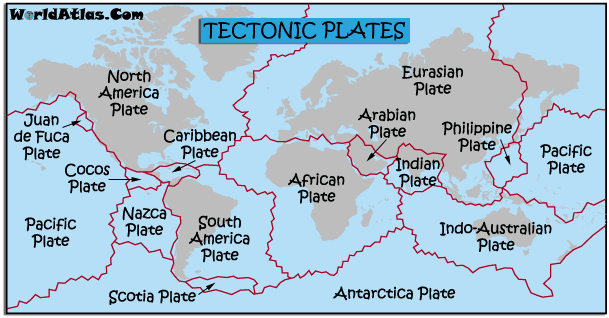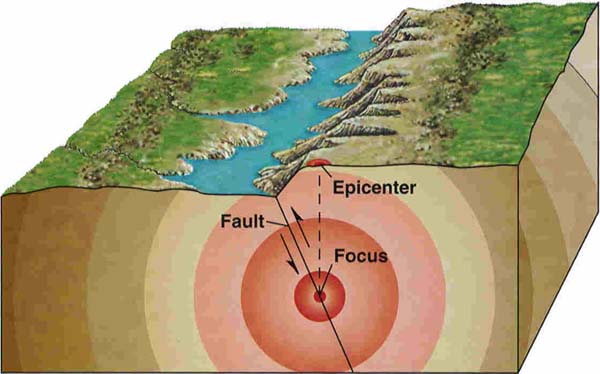Questions Section: Forces in the Earth's Surface
What are the three main types of stress points in a rock?
Three main stress points in a rock are:
- Tension

- Compression

- Shearing
 How does tension change the shape of the earths surface.
How does tension change the shape of the earths surface. Tension it stretches the rock like warm bubble gum. It takes the earth and stretches, the tension pulls the earth apart.Just like this road, this is an example of tension, it pulls the road apart.
Compare the way compression works, and the way tension works.
They are opposite when it comes to what they do to the earth. Compression works by pushing the earth together, creating mountains and rolling hills. Tension does the opposite, by pulling the earth apart.
 What is a fault?
What is a fault?A fault is the motion of the earths crust, being push or pulled creating a break in the surface of the earth. There is the normal fault, reverse fault and the Strike-Slip fault.
Why do faults occur along plate boundaries?
Faults occur along the boundaries because of the large amount of tension being released between the two tectonic plates. Faults can occur not always around the boundaries, but sometimes around the area of the boundaries.
What happens when the plates diverge, push together or move past each other?
Normal Fault: at and angle, above the hanging wall, this fault occurs when the plates diverge.
Reverse Faults:
When the earths crust pushes together, the hanging wall and foot wall go up! Instead of sliding down, it slide up.
Strike-Slip Faults
These faults are when the plates move past each other. This type of fault has very little up/down motion.
Where do the major earthquakes occur?
After analyzing the Earthquake map I noticed that there are only
 |
| This is a example of the worlds tectonic plates, just clumped together. |
Some Shaking Earthquake Facts...
- The earliest reported earthquake in California was felt in 1769 by the exploring expedition of Gaspar de Portola while the group was camping about 48 kilometers (30 miles) southeast of Los Angeles.
- Scientists predict that Los Angeles and San Francisco will be adjacent to one another in approximately 15 million years.
- Moonquakes (“earthquakes” on the moon) do occur, but they happen less frequently and have smaller magnitudes than earthquakes on the Earth.
- The interior of Antarctica has icequakes which, although they are much smaller, are perhaps more frequent than earthquakes in Antarctica. The icequakes are similar to earthquakes, but occur within the ice sheet itself instead of the land underneath the ice.
"Earthquake Facts." U.S. Geological Survey Earthquake Hazards Program. Web. 27 Jan. 2011. .




















